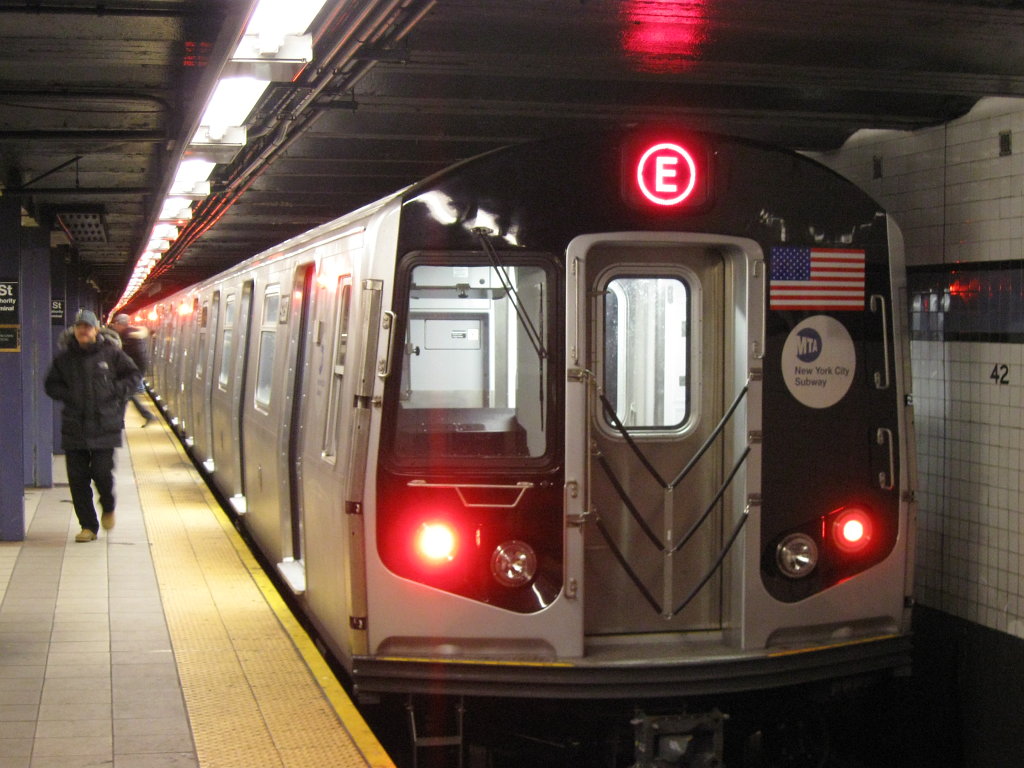by Nicole Chávez (Staff Writer)
STOP: WAKEFIELD – 241ST STREET
MEDIAN HOUSEHOLD INCOME: $38,261
On a dull, fall afternoon at the northern edge of the Bronx, a subway car screeches to a stop at an empty platform. I sigh in content at the familiar scene. The subway stop is a mere ten-minute walk away from my parents’ cramped apartment, a place that has become slightly less cramped since I left for Yale. Only home for two days, I make a trip to Manhattan.
The morning rush hour has long since ended when the beats of Drake’s “Hotline Bling” impregnate the empty silence of the subway station. Ever since I left the city you/ Got a reputation for yourself now. The rapper’s croon, blasting from a passerby’s headphones, is interrupted by the sound of ungreased subway doors groaning open. I break out of reverie. The pungent scent of sweat percolates my nose, springing tears to my eyes. Accustomed to subway quirks, I ignore the tears, take my seat, and wait for the train to start down the 2-line.
STOP: NEREID AVENUE
MEDIAN HOUSEHOLD INCOME: $42,880
On Tumblr, self-proclaiming hipsters and artistes tag images like that of the Nereid Avenue subway station, with its grimy, stained glass windows flanked by freshly sprayed graffiti tags, as #urbanchic. #Factcheck: It’s really urban decay. At this stop, people pile into the subway car, a palette of brown faces contrasting starkly against the sterile white walls of the car’s interior. It’s only noon, but the reek of cheap alcohol already seeps from the mouth of the man splayed out on the seat next to me. Opposite to me sits a little boy who looks no older than 10. With a grim look on his face, he pulls down his snapback so that its rim just barely conceals his eyes. The kid reminds me of my little cousin Eric. Recently, Eric got suspended from elementary school for picking fights.
STOP: EAST 180TH STREET
MEDIAN HOUSEHOLD INCOME: $13,750
As herds of people funnel in and out of the train at East 180th, hard metal resounds desperately against the subway car floor. The standing crowd disperses as people rush to find seats. As the subway car lurches forward, the only person left standing is an elderly man with a metal rod gripped tightly in his fist, trying to regain balance of his wobbling legs with his makeshift cane. I inspect him, taking in his stained brown shirt, torn at the neck, and the vague emptiness at the bottom of his right pant leg. In a strong, but strained voice, he tells his story – a war veteran forced into homelessness by his own country. Hobbling down the moving subway, nearly falling, he shakes a coffee-stained cup with loose change. For most of the passengers aboard the subway, charity is a luxury that they cannot afford. As the train arrives at the next stop, the veteran leaves with the same five pennies with which he came, a soldier departing the battlefield devoid of spoils of war.
I gaze outside the window and avoid eye contact with other travelers. When I was little, I would occasionally accompany my dad on the subway to work. Jumping atop his lap, I would meticulously chip off the dry paint splattered across his white, painter overalls while we waited for our stop. Now, I cannot help but feel self-conscious. About 4:00pm curfews in a “changing” neighborhood, and a sheltered adolescence. About the Choate banner hanging from my bedroom wall. About my father’s “Yale Dad” t-shirt. I am struck with guilt for making it out of my neighborhood. More aptly put, it’s the guilt felt for those back home who will not.
No matter how many times they commute to the Upper East Side, in hopes that affluence will rub off on them the same way the Chanel No. 5 does on a Burberry scarf, they always make a roundtrip home. They are stuck in a perpetual state of static movement, where physical movement is falsely synonymous to social mobility. Background is the defining indicator of the quality of one’s life outcome. The equality of condition afforded by the subway, through its connection between ghetto Harlem and the prosperous Upper East Side, is a specious one. The exception to the trend, I have a one-way ticket to Connecticut while my peers are forced to return to poverty and de facto segregation after working overtime each day.
These thoughts speed through my brain as quickly as the train slides down the tracks to 116th Street. Outside, colors blur into a mess as the subway hustles past red brick buildings with sun-bleached roofs and houses fading from white to grey with chipping paint and falling shingles. On the corner of one building, the word EXODUS is spray-painted in ragged letters. The graffiti appears rushed, as though the people who painted it were hurrying to join the exodus themselves.
STOP: 116TH STREET
MEDIAN HOUSEHOLD INCOME: $55,469
I don’t see a white face until this stop; approximately forty minutes after 241st Street. The sole passenger is an elderly, white man. He enters the subway of brown bodies, rushing to his seat, eyes cemented to the ground. He opens a copy of Oedipus Rex and his shoulders visibly relax upon his eyes meeting the white pages of his book. Here, West 116th Street intersects Morningside Heights, the home of Columbia University.
STOP: 96TH STREET
MEDIAN HOUSEHOLD INCOME: $75,481
The 2-line leaves Harlem and arrives at the Upper West Side. The clinking of Swarovski crystals signals the entrance of a new crowd of passengers. They stroll nonchalantly into the subway cars, their languid pace creating a bottleneck at the doors. At this stop, battered jeans are swapped for maroon slacks and salmon-colored Vineyard Vine shorts. Kate Spade bags replace the grease-drenched, brown paper bags of the bodega, and Birkenstocks replace Crocs. A young couple stands at the center of the car; a girl gingerly sips her Starbucks while her companion guffaws at his own jokes. An elderly, white woman sitting beside a black man and Asian woman is perched at the edge of her seat and glances around nervously. Her body cringes inward as she avoids brushing up against the passengers. After several minutes, she lurches forward and stands, forfeiting the only remaining seat for shaky legs.
After some time, along comes a middle-aged Muslim woman, clinging to her loose, unpinned hijab with one hand and a sign explaining the circumstances of her homelessness and unemployment in the other. Eyes remained glued to the screens of $649 iPhone 6S Plus’s as everyone actively ignores the woman.
In fast-moving settings like the subway, I, along with my privileged peers, focus on where we need to go and what we need to do next. Efficiency over empathy. Capital over charity. These are the maxims we learn, live, and thrive by. It’s easier to convince ourselves that we don’t give change because we are too busy responding to a text from a friend or figuring out the remaining time before we reach our next stop. We choose to not confront the truth: we simply do not care enough.
STOP: TIMES SQUARE – 42ND STREET
MEDIAN HOUSEHOLD INCOME: $118,487
All the passengers from 116th Street down leave the train. I follow.



